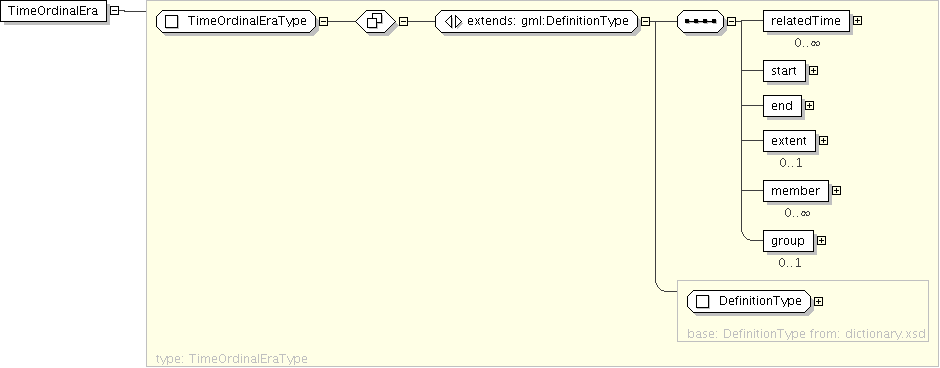
| Name | TimeOrdinalEra |
|---|---|
| Type | gml:TimeOrdinalEraType |
| Nillable | no |
| Abstract | no |

'An Era may be composed of several member Eras. The \"member\" element implements the association to the Era at the next level down the hierarchy. \"member\" follows the standard GML property pattern whereby its (complex) value may be either described fully inline, or may be the target of a link carried on the member element and described fully elsewhere, either in the same document or from another service.'
'In a particular Time System, an Era may be a member of a group. The \"group\" element implements the back-pointer to the Era at the next level up in the hierarchy. If the hierarchy is represented by describing the nested components fully in the their nested position inside \"member\" elements, then the parent can be easily inferred, so the group property is unnecessary. However, if the hierarchy is represented by links carried on the \"member\" property elements, pointing to Eras described fully elsewhere, then it may be useful for a child (member) era to carry an explicit pointer back to its parent (group) Era.'
